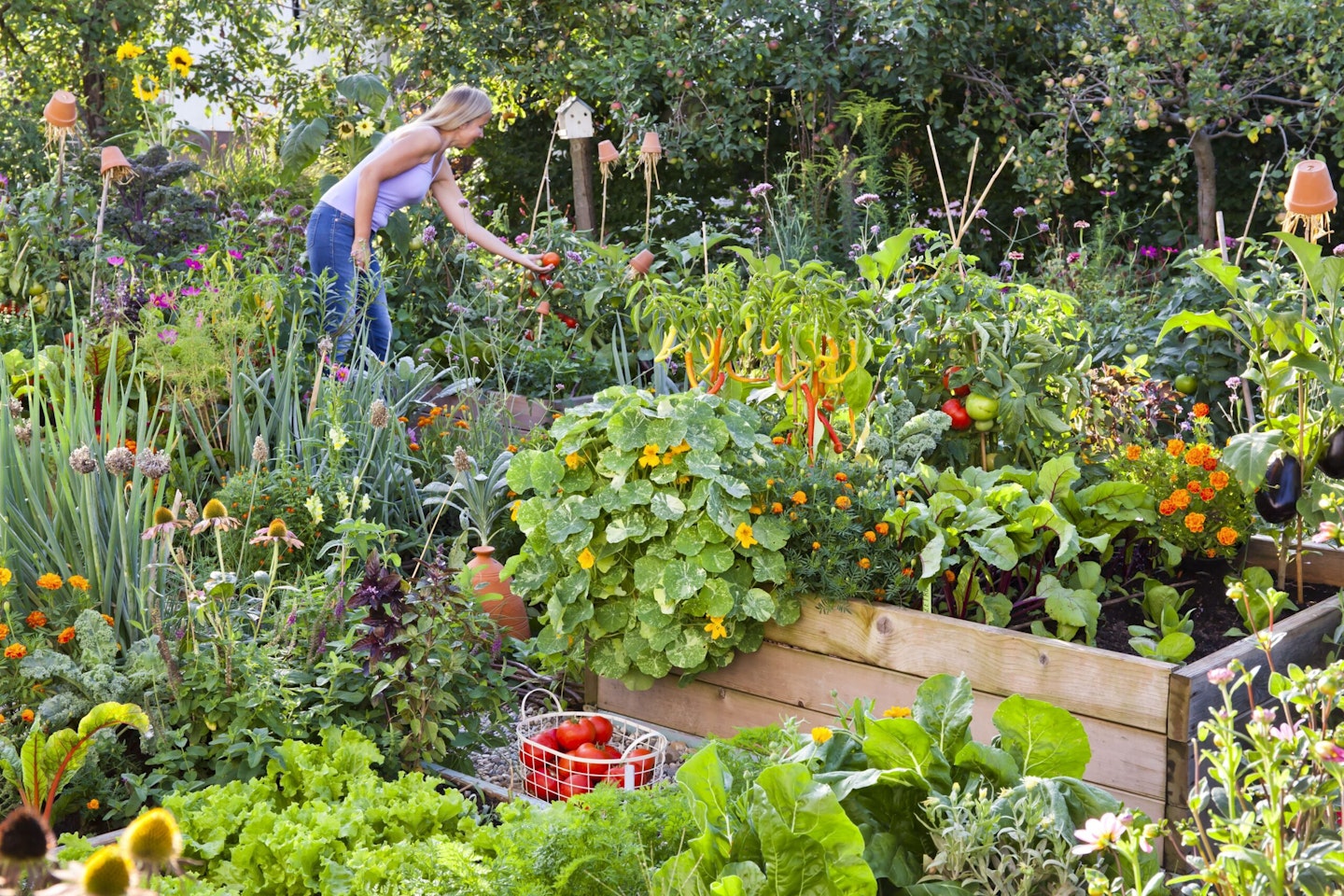
August is a magical month of abundance in the kitchen garden as plots give rise to bountiful harvests. Late summer isn’t simply about admiring neat rows of swelling onions and marvelling at mammoth marrows – it’s a time to maximise yields, bulk up stocks of plants for next season and get planting to keep treats coming over the colder months. Our crop-by-crop advice will help you get the most out of your late summer veg plot.
Raspberry pruning is a berry big deal!
When summer-fruiting raspberries finish cropping, pruning holds the key to a successful harvest next year. Summer raspberries (floricanes) are borne on stems that grew the previous year. After cropping in late summer, these old, woody stems should be cut down to ground level, leaving space for the youngest stems, which will bear next year’s fruit, to develop. Tie the strongest of these fresh green stems to horizontal wires, a hand width apart. Autumn-fruiting raspberries (called primocanes) should not be cut down until late winter, because their crop of sweet, juicy berries will be borne on the current season’s stems. Use fruit cages or netting to protect raspberries if birds are pinching treats.
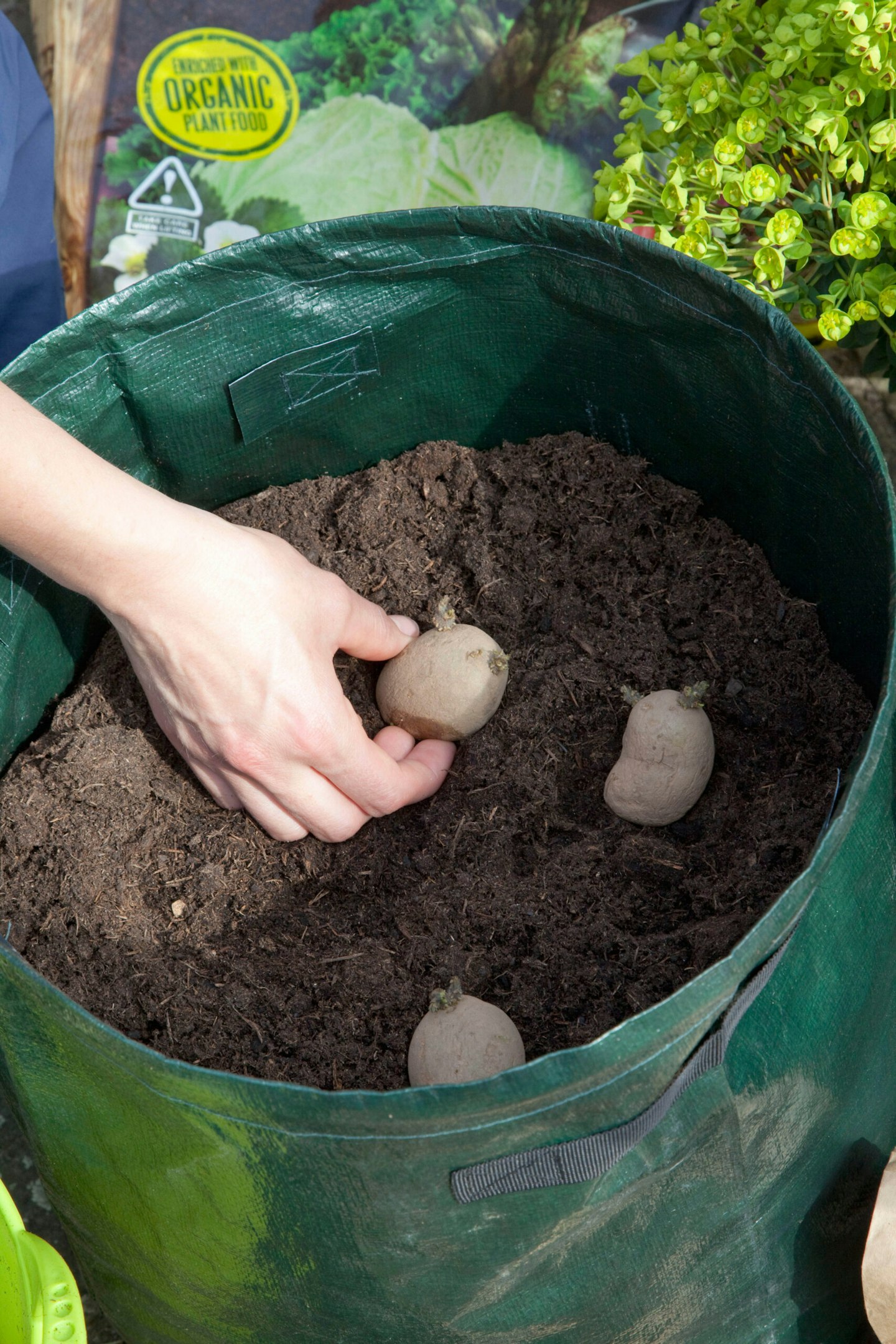
Root for a bumper crop of spuds
Second early and maincrop potatoes can be ready for harvesting this month. When early crops flower (or if buds drop), it’s a sign that buried treasure awaits. Use a garden fork to gently lift a small area of soil, taking care not to spear tubers, and see if your spuds are big enough to harvest. With maincrops, however, allow the foliage to turn yellow if you plan to store the potatoes rather than use them straight away. Leave harvested tatties on the soil to dry in the sun for a day and discard any that are rotten before storing. To keep delicious harvests coming, fill a large tub with multi-purpose compost and plant ‘Maris Peer’ or ‘Charlotte’ seed potatoes: moved into a frost-free greenhouse or conservatory when temperatures dip, these spuds will make a fantastic Christmas harvest!
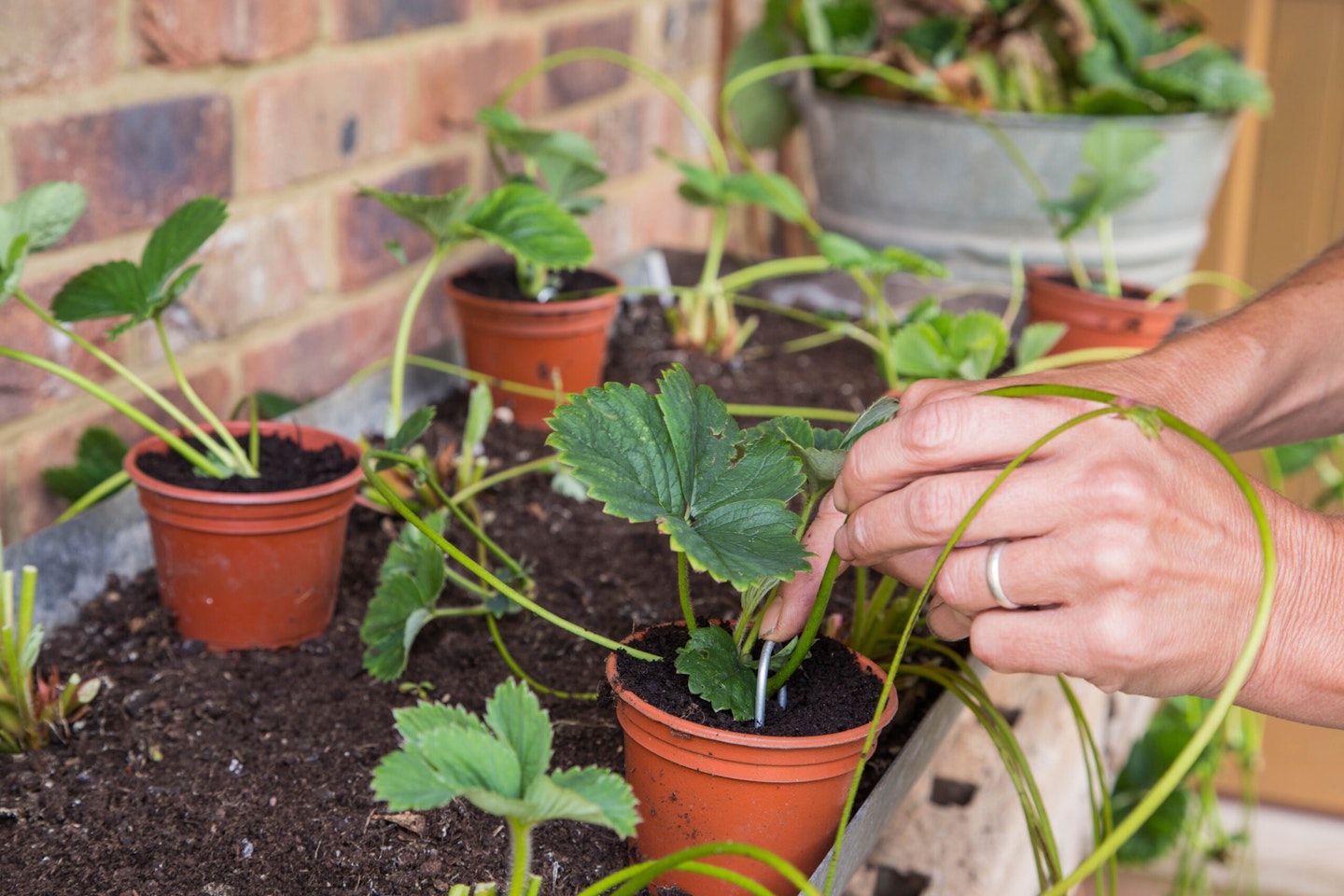
Strawberry fields forever!
Summer-fruiting strawberries run out of steam in August, so turn your thoughts to bumper crops next season. Examine plants for long stems, called runners, which carry baby plants. Peg these plantlets down into the soil or into small pots of multi-purpose compost and water well. Once young plants are actively growing, the stem can be cut from the parent. Water without splashing the crown of strawberry plants, which can encourage botrytis. After cropping is over, tired and shrivelled leaves should be cut away to open up the plant’s structure.
Push the right buttons for perfect sprouts
Brussels sprouts are a slow-growing but rewarding crop. While firm soil holds the key to tight buttons, and autumn frosts intensify their flavour, plants need a little TLC this month. These tall brassicas should be staked to prevent damage from wind rock, while earthing up soil around their roots provides extra stability. Yellowing leaves should be removed. Sprouts (and other brassicas) are at risk from caterpillar attack. Ensure cabbage white butterflies can’t lay eggs on leaves by covering crops in fine netting. It will prevent pigeons damaging crops, too.
Harvest onions at their prime
Shallow-rooted onions should be kept weed-free as bulbs swell and cut down on watering from midsummer. Watch out for foliage turning yellow and keeling over – this is your window of opportunity to harvest onions, which should be carried out before foliage shrivels altogether. Carefully lift bulbs using a fork and let them ‘ripen’ by drying in full sun for a fortnight before storing in a cool, dry, frost-free place. For an earlier crop, plant autumn onion sets such as ‘Electric’ and ‘Senshyu’ from September. Over-wintering onions are slower to grow but will be ready by midsummer next year. Got a gap to fill? Sow winter-hardy spring onion ‘White Lisbon’ into shallow drills between August and October. Crops will be ready from March.
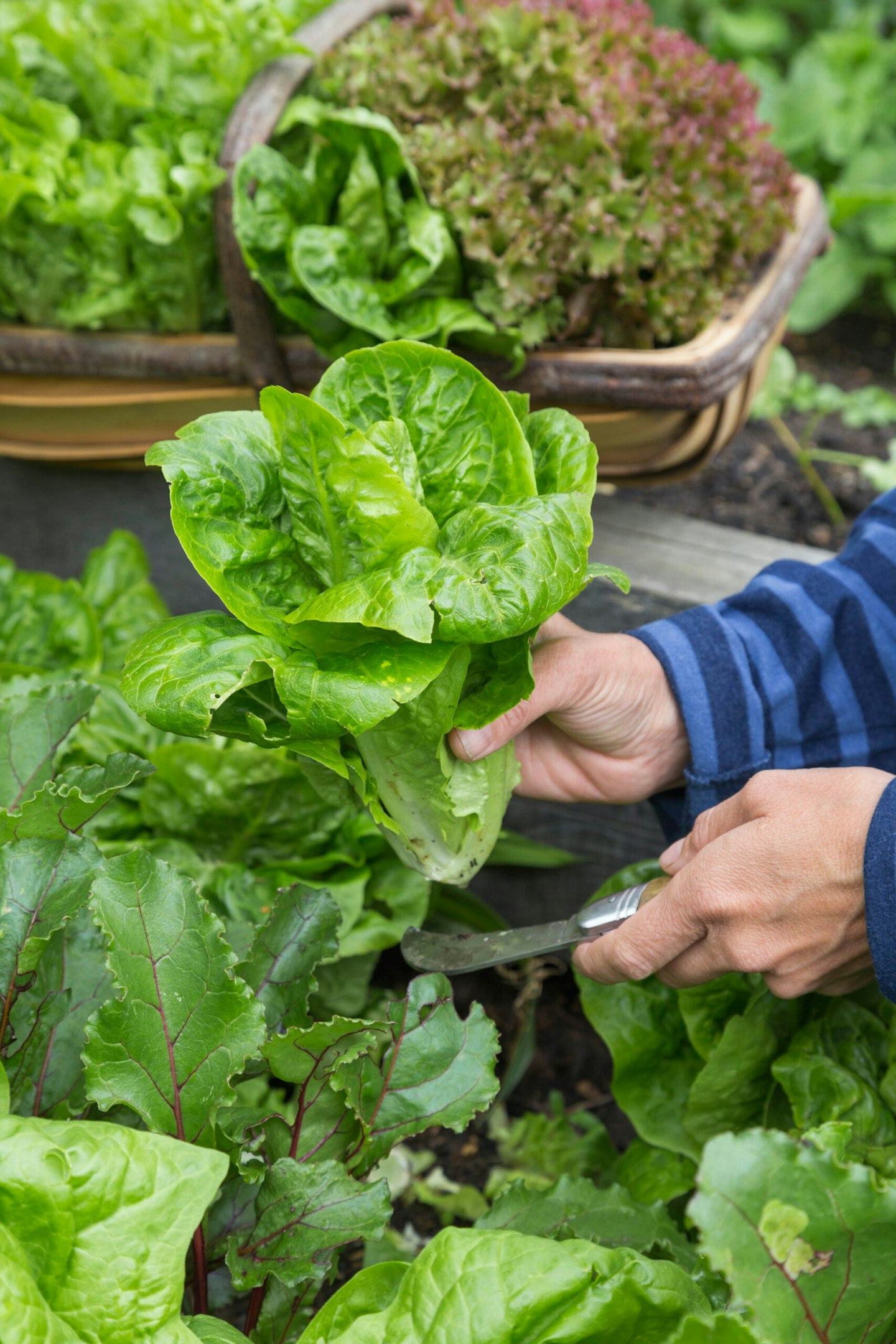
Savour salad days (well, at least into autumn)
Cut-and-come-again salads provide a ready supply of tasty leaves that can be snipped as needed, but traditional lettuces that form dense hearts, such as butterhead and cos types, are less forgiving. If left in the ground for too long once mature, these veg plot staples have a tendency to bolt (run to seed), which ruins their taste, so harvest promptly. Winter butterhead lettuce ‘Valdor’, which can be sown now, is acclaimed for its resistance to botrytis and low temperatures. If you have a greenhouse, put it to good use over winter by growing hardy leaves such as mizuna, rocket and mustard. Started in trays now, they can be transplanted into pots or greenhouse borders in autumn.
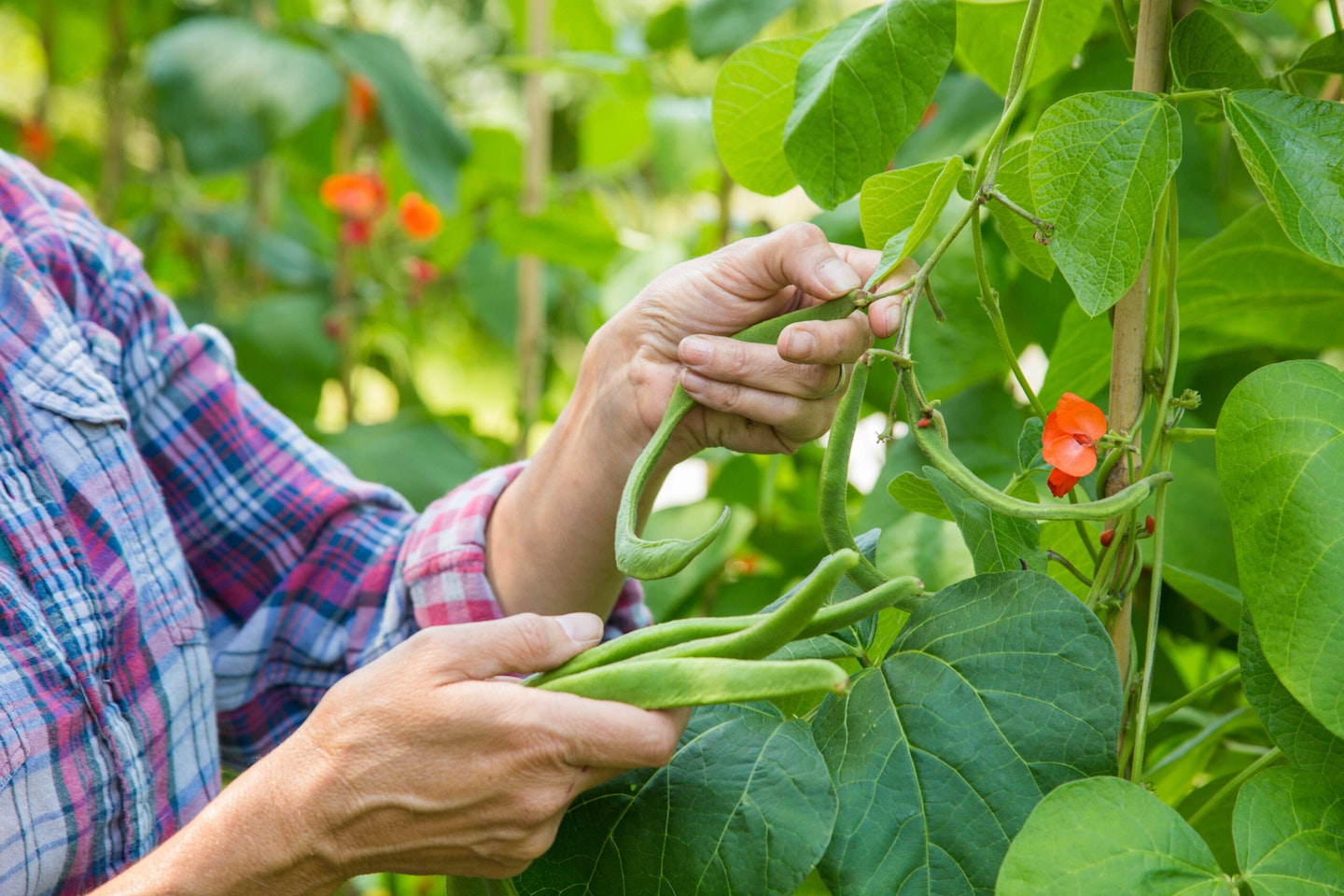
Spill the beans!
Harvest runner beans while young and they’ll be tender without a hint of stringiness, while regular picking encourages plants into producing more pods. Pinch out the tips of stems once they reach the tops of canes: it will prevent unwanted foliage flailing around and encourage fresh growth lower down. Liquid feed with potassium-rich tomato food to keep crops coming. August drought is the biggest threat to thirsty runners, because plants that wither won’t bounce back, so water well. Black bean aphid rapidly infests plants, so unless ladybirds are feasting on sap-sucking bugs, blast aphids from stems and the undersides of leaves using a hose. After cropping is over, cut plants down but leave roots in the soil to boost nitrogen levels.
Harvest sweetcorn for a-maize-ing flavour!
Nothing beats the flavour of homegrown sweetcorn, but enjoying this taste sensation relies on harvesting cobs at their prime (sweetness ebbs away from the moment the crop is cut, as sugar turns to starch). Choose cobs where tassels at the end have darkened and peel back a little of the husk to reveal the densely packed kernels. Pierce one with a fingernail: if the liquid that emerges is a creamy texture, the cob is ripe, but if it’s watery it’s not ready. Where plants have multiple cobs, remove tiddlers that stand no chance of maturing before summer is over, so plants can direct energy into fattening up the biggest cobs.
Pump up your pumpkins
While pumpkins relish summer heat, as the fruits swell rapidly, dry soil can prompt outbreaks of powdery mildew, so keep crops well watered (taking care to aim water at the soil and avoid splashing leaves). If size matters, thin fruits to just several per plant. Sit fruits on straw, tiles or wood to prevent crops rotting on damp soil. Pumpkins store best if they’ve ripened evenly. Snipping excess leaves from sprawling plants allows the August sunshine to hit fruits and speed up ripening.
Keep the taste of summer coming
If you have a glut of carrots, don’t worry: as long as soil is well drained, roots can be left in the ground and pulled as needed. There’s still time for a late carrot sowing to extend the harvest season. Try ‘Autumn King 2’, which will yield baby roots before the worst of the winter weather. If temperatures dip sharply, however, autumn-sown carrots can be shielded under cloches, while mature roots in the ground can be kept snug under a layer of straw. Direct-sown radishes are a quick crop to keep the taste of summer going and can be ready to pull within a month. Perpetual spinach sown in autumn is a winner for flavoursome leaves that can be picked throughout the colder months, with good resistance to bolting.
